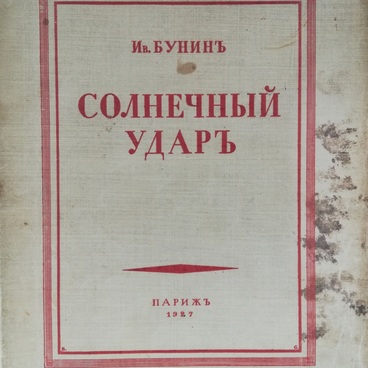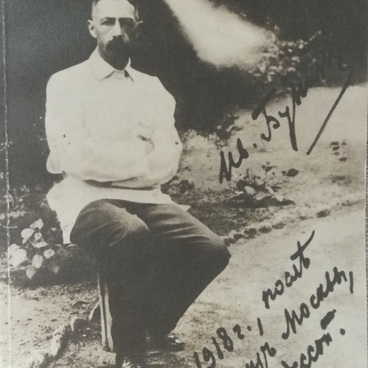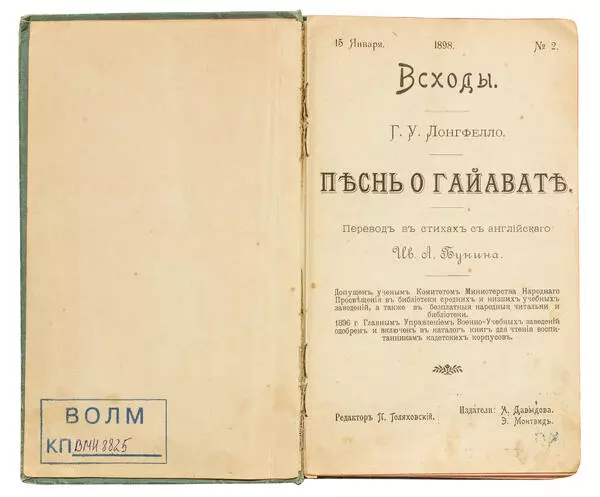‘The Song of Hiawatha’ is a poem created by the American writer and poet Henry Longfellow in 1855 based on the legends of the North American Indians. It tells about a man of wonderful ancestry, who was sent to them to clear their rivers, forests, fishing places and teach the people the peaceful arts: farming, healing, writing to save from oblivion their glorious traditions, the deeds of heroes and their knowledge. His arrival at this land marked the beginning of a new life, the end of fratricidal wars, the triumph of peace, the beginning of the unity of all Indian tribes. The readers can see the whole life of Hiawatha, during which he experienced the joy of friendship, the happiness of love, and the fierce grief of loss.
In Russia, the poem was almost unknown for a long time. The first translation was made by Dmitry MikhAlovsky, who translated only a few of its chapters in 1878, his style was dry and with omissions, he significantly changed the form and tone of the original. BUnin had always wanted to translate this poem into Russian. In 1895, in Moscow, his elder brother Yuly introduced him to Olga Mikhailova who came from Voronezh, she spoke several foreign languages. Olga Antonovna readily agreed to make a line-by-line translation of the poem for him. In a letter to her in March 1895 Bunin wrote: ‘I’ve been obsessed with Hiawatha — it’s my dream since I was a child to translate all this wonderful song and publish it and admire it and read it for myself hundreds of times if there is no one else to read it.’ He worked on the translation, a very accurate one, which was supposed to be as close as possible to the original, from 1896 to 1903. Bunin’s translation was first published in Oryol, at the end of 1896, and even earlier the poem was published in the Orlovsky VEstnik newspaper During the period from May 2 to September 24, 1896, the full text of the translation of “the Song of Hiawatha” was published in 25 issues of the newspaper.
This version of the poem published in Oryol was quite complete and accurate, but did not possess the high artistic quality that Bunin achieved in subsequent editions of Longfellow’s poem (1898, 1899, 1903). Only the next 4 editions allowed Bunin to achieve the necessary accuracy and elegance of translation. Bunin’s translation allowed to emphasize all the poetic virtues of the poem, all its distinctness, its artistic techniques, musicality and perfection of its verse. The size of the original was also preserved, although this was very difficult to achieve: English words are much shorter than Russian, and this difference in languages created great obstacles in transmitting the original verse size. Bunin, however, managed to find the verbal means to reflect in the Russian language all the unique features of the American poet’s creation, and in doing so, he turned his translation into a wonderful work of Russian literature.
In Russia, the poem was almost unknown for a long time. The first translation was made by Dmitry MikhAlovsky, who translated only a few of its chapters in 1878, his style was dry and with omissions, he significantly changed the form and tone of the original. BUnin had always wanted to translate this poem into Russian. In 1895, in Moscow, his elder brother Yuly introduced him to Olga Mikhailova who came from Voronezh, she spoke several foreign languages. Olga Antonovna readily agreed to make a line-by-line translation of the poem for him. In a letter to her in March 1895 Bunin wrote: ‘I’ve been obsessed with Hiawatha — it’s my dream since I was a child to translate all this wonderful song and publish it and admire it and read it for myself hundreds of times if there is no one else to read it.’ He worked on the translation, a very accurate one, which was supposed to be as close as possible to the original, from 1896 to 1903. Bunin’s translation was first published in Oryol, at the end of 1896, and even earlier the poem was published in the Orlovsky VEstnik newspaper During the period from May 2 to September 24, 1896, the full text of the translation of “the Song of Hiawatha” was published in 25 issues of the newspaper.
This version of the poem published in Oryol was quite complete and accurate, but did not possess the high artistic quality that Bunin achieved in subsequent editions of Longfellow’s poem (1898, 1899, 1903). Only the next 4 editions allowed Bunin to achieve the necessary accuracy and elegance of translation. Bunin’s translation allowed to emphasize all the poetic virtues of the poem, all its distinctness, its artistic techniques, musicality and perfection of its verse. The size of the original was also preserved, although this was very difficult to achieve: English words are much shorter than Russian, and this difference in languages created great obstacles in transmitting the original verse size. Bunin, however, managed to find the verbal means to reflect in the Russian language all the unique features of the American poet’s creation, and in doing so, he turned his translation into a wonderful work of Russian literature.




